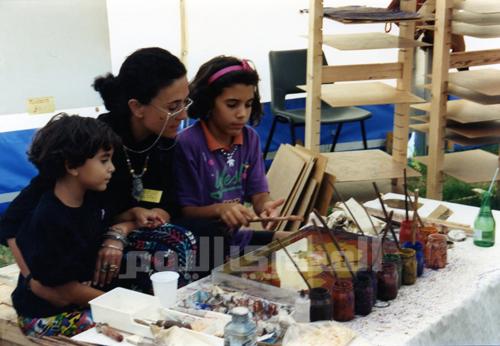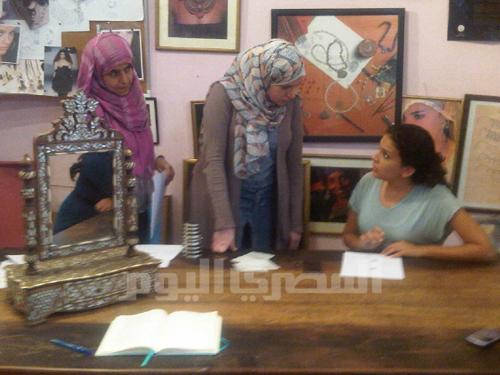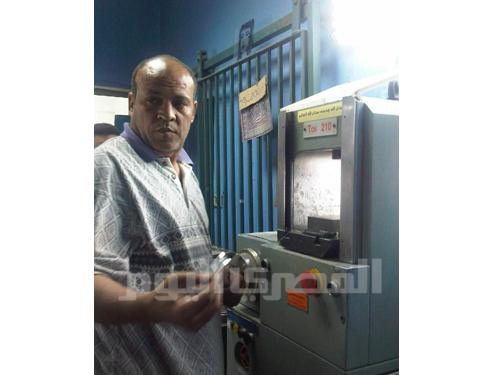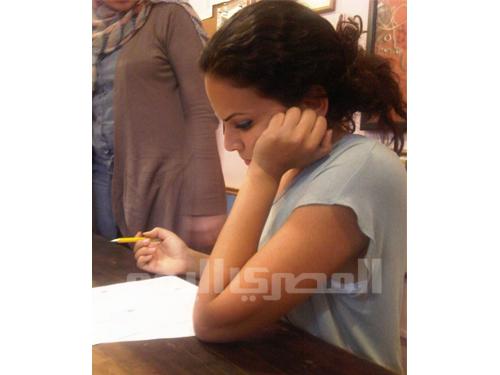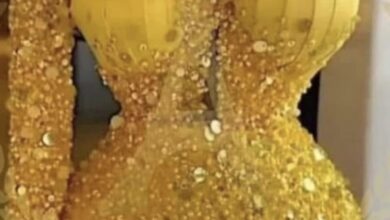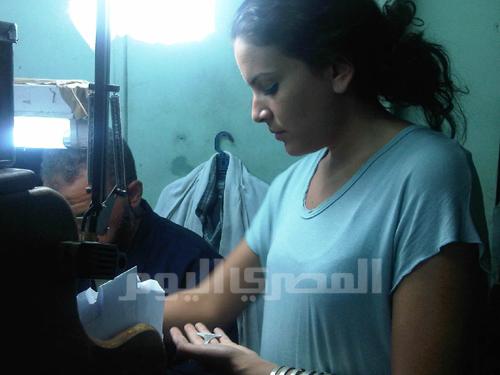
Egypt is a massive living organism — a web of ticking clocks, each set to a slightly different millisecond. With approximately 80 million in the country, 18 million of whom are woven into the streets and buildings of Cairo, the traffic of the city may crawl but many would say it is only by the will of God that it continues to flow at all. People are everywhere — driving, jumping off buses, walking, bicycling … ticking minute by minute through the days and nights of the city. Doctors, valets, belly dancers and beggars … Cairo keeps 18 million cogs in one of the world’s busiest wheels. This series takes a magnifying glass to one person, a representative of a job that keeps the city ticking — an eye-level shot that takes you through a day in the life of a cog in the wheel of Cairo. —Nevine El Shabrawy
It is 8 am and the house is already up and running; the entire family is up and done with the regular meditation session. After coffee and breakfast, renowned jeweler and internationally recognized artist Azza Fahmy conducts the usual morning briefing with her daughter and up-and-coming talent Amina Ghali.
The artist's house is inspiring — pieces of art are scattered all around. Ghali is seated on a couch sipping on her cup of coffee and enjoying the warm rays of sun sneaking in through the balcony. But such tranquil moments are rare in the jeweler's day.
"By 9, I am at the factory in 6th of October [City] because my bosses are pretty adamant about punctuality," says Ghali as we struggle through the morning traffic of the Cairo suburb. Until recently Ghali drove herself to the plant, but she doesn't anymore, because of a recent knee injury.
"AF [Azza Fahmy] is available two to three days a week, but I have to be there every day. On a slow work day, I will be home by 5," explains the young artist. On days leading up to events or busy launches, Ghali won't step into her house before 9.
"Being a single parent, mom had to drag us everywhere," explains Ghali. For 10 years, Amina and her older sister Fatemah were their mother's sole helpers at the annual summer Arts & Crafts exhibition in England. "We would build the booth and sell jewelry for four consecutive days," she adds.
Amina Ghali joined the Azza Fahmy jewelry family in 2005, but launched her first Amina Ghali collection, Animal Print, in 2008.
"I spent three years attending my mother's design amendment sessions at the factory, learning how to pick up on the little proportions and intricate details," confesses Ghali.
By 10 am, the factory is like a beehive. Amina runs up quickly to AF's room, where all the final designs for her coming collection are laid on a meeting table for her to make her final amendments.
"It takes eight to nine months to design a collection, but research begins prior to that," says Ghali. In other words, the young artist has to predict a fashion trend one and a half years before its time, and foresee all political, economic and social conditions that would nurture such a style.
The draftsmen and women walk one by one into the room, displaying their 2-D and 3-D versions of Azza Fahmy's coming fashion collection.
"Nora has been working on this pharaonic bracelet for the last two and a half years," says Ghali, pointing to her talented draftsperson. Draftsmen and women create a more perfected version of the initial design.
After the morning brief, Ghali is presented with a few mud molds to inspect. If approved, they are automatically executed in copper.
"I am responsible for every step of this process," says the jeweler. Lately the young designer has been gradually assuming a bigger role in the artistic beehive.
Following the morning briefing, Ghali runs downstairs to the workshop to monitor the pattern-making by the engravers. The engraver takes the mold and the silver and places it in a makhrata, an engraving machine, to create the final product, which is then used in the jewelry.
"Eleven stamps [molds] were used to create this bracelet," says Ghali, pointing to the neo-tribal one she is wearing.
By 4 pm, the factory inspection is over and Ghali runs back downtown to join the marketing and public relations team in the Zamalek office for a Skype conference scheduled for 5. The meeting room is filled with people talking and running around, trying to get things done. The day is clearly not over for the young designer.
"I am a major lover of the outdoors — diving, kite surfing, hiking and camping are all activities I would like to do more of," says Ghali with a hopeful smile on her face.
The designer dreams of a small workshop and a house outside Cairo where she can have a stress-free life shielded from the daily pressures of the city.
"Hopefully in five or six years," she concludes.
At the end of a hectic work day, another recap session with Azza Fahmy is scheduled for dinnertime, says Ghali.


